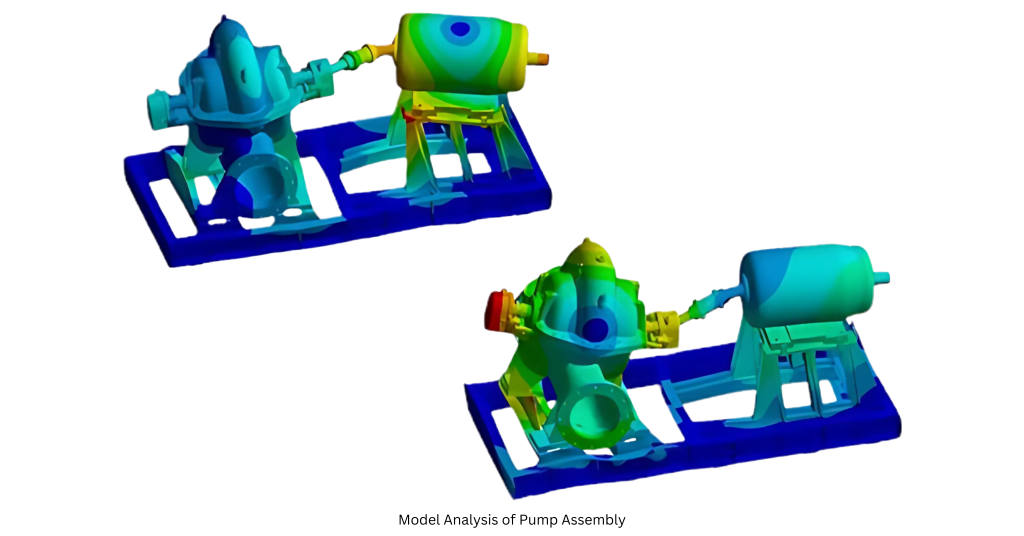Introduction
As per the applications, industrial equipment is subjected to different types of loading. In some cases, the structures are subjected to vibrations. These forced vibrations may be sinusoidal or random in nature depending upon the functional requirements. If this external excitation frequency matches with one of the natural frequencies of the structure, then resonance will occur & structure vibrates with maximum amplitude. The condition of resonance should be avoided to avoid its harmful effects on the structure (In most of the cases this condition leads to structural failure). Modal analysis is performed to study different natural frequencies & their corresponding mode shapes.
Process equipment manufacturer from India & Abroad approached Analyzer CAE Solutions to seek assistance in evaluating the design of their newly developed equipment against forced vibrations & provide the solution in case of any observed resonance.
Workflow
• Determining the material properties for different MoCs of the structure, design parameters to be considered in FEA.
• Preparing FEA Model for modal analysis. In order to optimize the solution time, the meshing approach is of utmost importance in modal analysis.
• Solving the FEA model for modal analysis in ANSYS APDL Solver.
• From results of FEA, structure is either evaluated for its different modes or it is used as prerequisite of a dynamic analysis.
• Report the results for client’s reference.

CHALLENGES
- Meshing approach for Modal Analysis
SOLUTION
The structure was analysed using Finite Element Method for Modal Analysis. The modal analysis is performed for the structure without any loading as we are evaluating a characteristic property of the structure. While creating FEA model, care had been taken to keep the structural stiffness unaffected.
The results showed that the natural frequencies of the structure are away from external excitation frequency by sufficient margin. Hence the structure does not exhibit any resonance during it service life & may sustain the external excitation as a rigid body.
BENEFITS
- A design can evaluated for its characteristic property – Natural frequencies.
- The resonance condition can be investigated for design modifications.
- With the help of mode shapes, a targeted design modification is made possible to avoid a particular mode.
